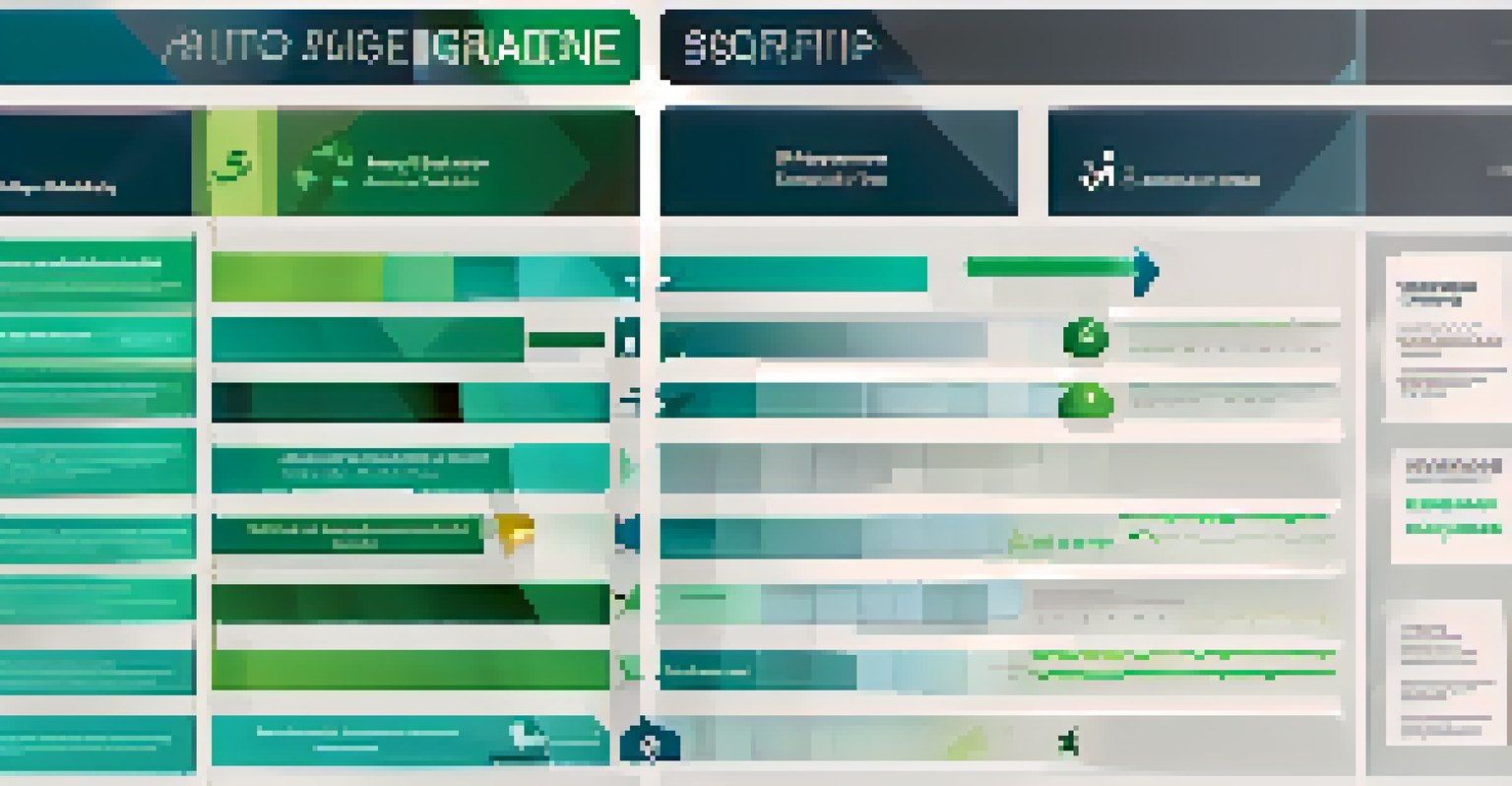Evaluating Hedge Fund Performance: A Guide for Investors

Understanding Hedge Funds: What They Are and How They Work
Hedge funds are investment vehicles that pool capital from accredited investors to invest in a variety of assets, often employing complex strategies. Unlike traditional mutual funds, hedge funds can use leverage, derivatives, and short selling to maximize returns. This flexibility allows them to pursue opportunities in various market conditions, making them appealing to sophisticated investors.
Hedge funds are like a box of chocolates; you never know what you're going to get, unless you know how to evaluate them properly.
The primary goal of hedge funds is to generate high returns, often regardless of market performance. They achieve this through active management and a wide array of investment strategies tailored to exploit market inefficiencies. However, this complexity can sometimes make it challenging for investors to evaluate their performance effectively.
When considering investing in a hedge fund, it's crucial to understand its structure, fee arrangements, and investment philosophy. Familiarizing yourself with these elements will help you assess whether a specific hedge fund aligns with your investment goals and risk tolerance.
Key Metrics for Evaluating Hedge Fund Performance
To effectively evaluate hedge fund performance, investors should focus on key metrics such as absolute returns, relative returns, and risk-adjusted returns. Absolute returns refer to the total profit or loss generated by the fund, while relative returns compare the fund's performance to a benchmark, such as an index or peer group. Understanding these metrics gives investors insight into how well a hedge fund is performing against its objectives.

Another important aspect is the Sharpe Ratio, which measures risk-adjusted returns by comparing the excess return of the fund to its volatility. A higher Sharpe Ratio indicates that a fund is delivering better returns for the amount of risk taken. This is especially important in the world of hedge funds, where risk management is a critical component of investment success.
Additionally, investors should consider the Sortino Ratio, which focuses specifically on downside risk. Unlike the Sharpe Ratio, the Sortino Ratio only penalizes returns that fall below a target return, providing a clearer picture of how a fund performs during tougher market conditions. By analyzing these metrics, investors can make more informed decisions about a hedge fund's performance.
The Role of Hedge Fund Fees in Performance Evaluation
Fees play a significant role in evaluating hedge fund performance, as they can significantly impact an investor's net returns. Most hedge funds charge a management fee, typically around 1-2% of assets under management, and a performance fee, commonly 20% of profits. Understanding these fees is essential, as they can eat into the returns generated by the fund.
In investing, what is comfortable is rarely profitable.
When analyzing performance, it's important to consider the fund's fees in the context of its returns. For example, a hedge fund that consistently delivers high returns may not be as attractive if its fees are disproportionately high. Therefore, comparing net returns—returns after fees—against benchmarks or peer groups is crucial for a comprehensive evaluation.
Investors should also look for transparency regarding fee structures, as some funds may have hidden fees that can affect overall performance. By doing thorough research on fees, investors can better assess whether the potential returns justify the costs associated with a hedge fund.
Assessing Risk: Understanding Hedge Fund Volatility
Risk assessment is a critical component when evaluating hedge fund performance, as it helps investors understand the potential for loss. Hedge funds can exhibit varying degrees of volatility, depending on their investment strategies and market exposure. Analyzing a fund's volatility alongside its returns provides a clearer picture of the risk involved.
One way to assess risk is by examining the standard deviation of a hedge fund's returns, which indicates how much the returns deviate from the average. A high standard deviation suggests greater volatility, while a lower standard deviation indicates more stable performance. Investors should consider their own risk tolerance when evaluating funds with different volatility profiles.
Additionally, investors can look at downside risk metrics, such as Value at Risk (VaR) and maximum drawdown. These metrics help quantify the potential loss in adverse market conditions, allowing investors to make more informed decisions about the risks they are willing to take with their capital.
Comparing Hedge Funds: Peer Group Analysis
To evaluate a hedge fund effectively, investors should conduct a peer group analysis by comparing it to similar funds within its category. This helps to contextualize a fund's performance, as different hedge funds may employ varying strategies or focus on different asset classes. By analyzing how a fund stacks up against its peers, investors can better understand its competitive position.
When conducting a peer group analysis, it's essential to consider factors such as fund size, investment strategy, and geographical focus. This ensures that comparisons are made with funds that are truly comparable. For instance, a fund focused on emerging markets may not be directly comparable to one that primarily invests in developed markets.
Furthermore, investors should examine both quantitative metrics, like returns and volatility, and qualitative factors, such as management experience and investment philosophy. A comprehensive peer analysis can help investors identify standout funds and make informed decisions about where to allocate their capital.
The Importance of Fund Manager Experience and Track Record
The experience and track record of a hedge fund manager can significantly influence the fund's performance. A successful manager often has a proven history of navigating various market conditions and generating consistent returns. Therefore, it's essential for investors to research a fund manager's background, investment style, and past performance before committing capital.
When evaluating a manager's track record, investors should consider both the duration of their experience and their performance during different market cycles. For example, a manager who has consistently outperformed their peers during market downturns may demonstrate effective risk management skills. This can be a valuable indicator of future performance.
Additionally, investors should look for transparency in communication and reporting from fund managers. A manager who provides regular updates and insights into their investment strategy can build trust and confidence with investors. By assessing a manager's experience and track record, investors can make more informed decisions about a hedge fund's potential.
Making Informed Decisions: Final Thoughts for Investors
Evaluating hedge fund performance is a multifaceted process that requires a thorough understanding of various metrics, fees, and risk factors. By taking the time to analyze these elements, investors can make informed decisions about which hedge funds align with their investment goals. Remember, it's not just about chasing high returns; understanding the underlying risks is equally important.
Investors should also consider their own risk tolerance and investment horizon when assessing hedge funds. Each investor's situation is unique, and what works for one may not work for another. By aligning investment choices with personal goals and risk appetite, investors can create a more balanced and effective portfolio.

In the end, knowledge is power. By arming yourself with the right information and insights, you can navigate the complex world of hedge funds with confidence. Whether you're a seasoned investor or just starting, a thoughtful approach to evaluation will help you make the most of your hedge fund investments.